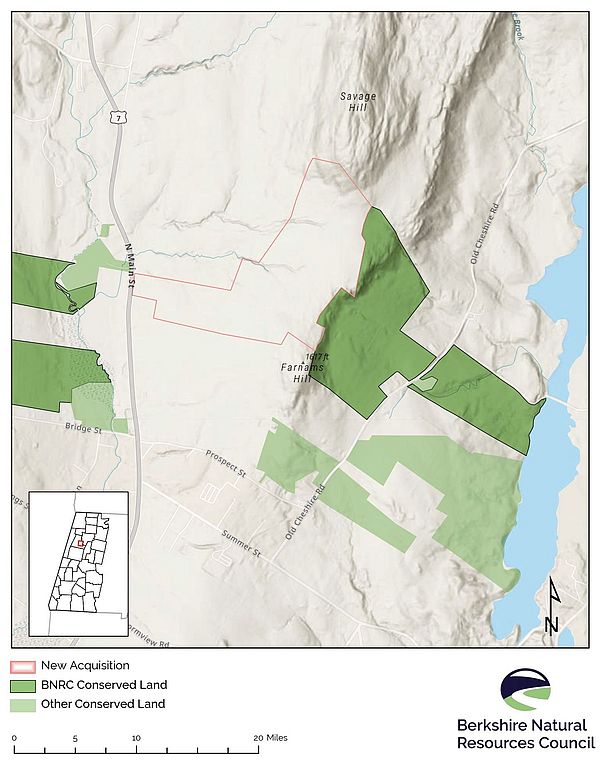A 178-acre parcel of land, to be called Farnam’s Hill, has been acquired by BNRC. The team could not be more excited.
Rising from Route 7 to the top of the ridge, the property is dotted with old farm fields divided by winding streams, with remnants of old orchards, healthy woods and wetlands that create rich and diverse habitat for wildlife—exactly the kind of connecting parcel that is high priority for BNRC.
“This project serves as a really good example of how a parcel can be conserved for a multitude of reasons,” says High Road Manager Deanna Smith. As BNRC’s newest reserve, it will also provide expanded public access for recreation, and offer incredible views of the Taconic Mountains and Mount Greylock in the “leaf off” season.
For Beth Mills, Director of Conservation, one of the most important aspects of this acquisition is the large acreage of intact, unfragmented forest cover.
“This is a huge win for conservation and will support the many local species that rely on a safe place to live and roam,” she says.
BNRC is working to expand protection of the forested uplands that connect Pittsfield State Forest and Mt. Greylock State Reservation as well as other conserved land in the Towns of Lanesborough, New Ashford, and Hancock for climate resiliency and public access to natural areas.
For those keeping tabs on the development of The High Road, this acquisition will contribute to the creation of a cross-county connector segment that will link two major long-distance trail, the Taconic Crest Trail and the Ashuwillticook Rail Trails.
Projects like this require a great deal of collaboration and financial support. BNRC is grateful for a significant anonymous gift, a generous grant from the Nion Robert Theriot Foundation, those who contributed to The High Road project, and all BNRC donors for providing funds needed to protect Farnam’s Hill forever. BNRC also recognizes with appreciation the Town of Lanesborough, especially its Select Board, for their partnership.
So what’s next? BNRC’s Stewardship Team have begun planning a trail on the parcel, and, eventually, a parking lot. Projects move through several phases before construction work can begin, including design, permitting, funding, and more. Stay tuned for more news in the coming years. In the meantime, let’s celebrate this incredible win for Berkshire conservation!
Why are large parcels of connected land so important for climate resilience?
Berkshire County is a part of the Northern Appalachian Region, with its diverse elevations, varied microclimates, and unique temperature and precipitation patterns. Keeping these forested mountains and hillsides connected allows plants and animals space to move and adapt to changing conditions.

